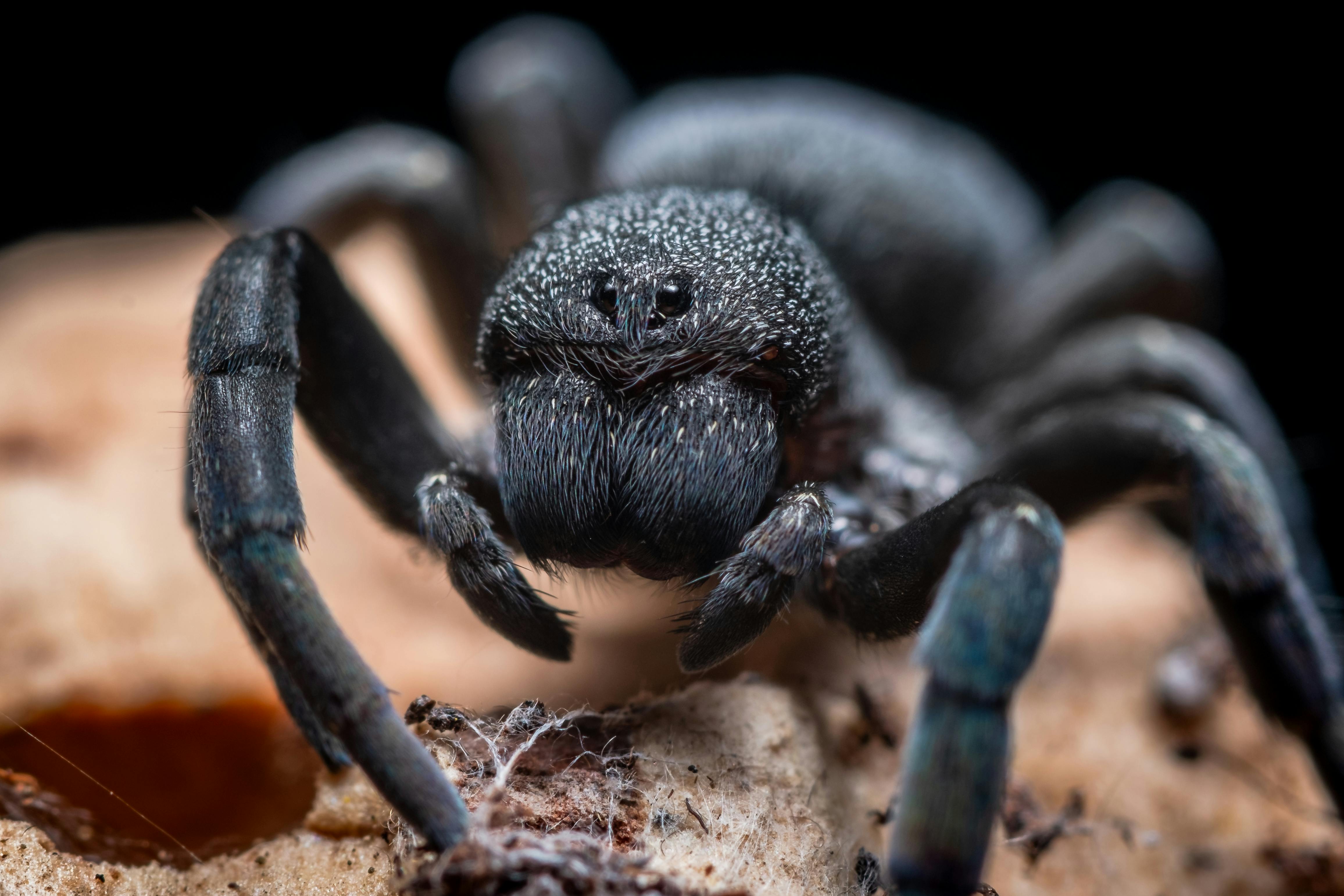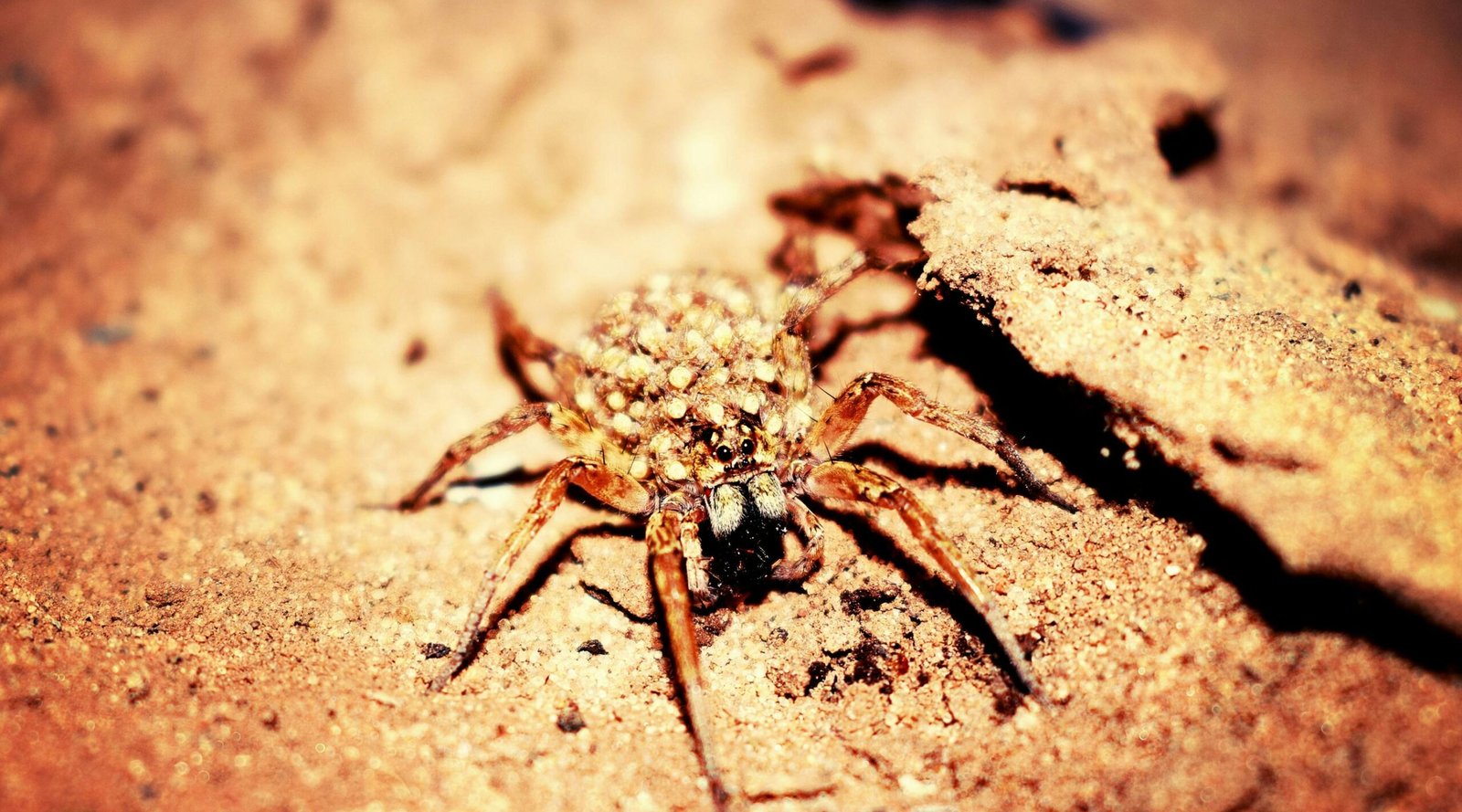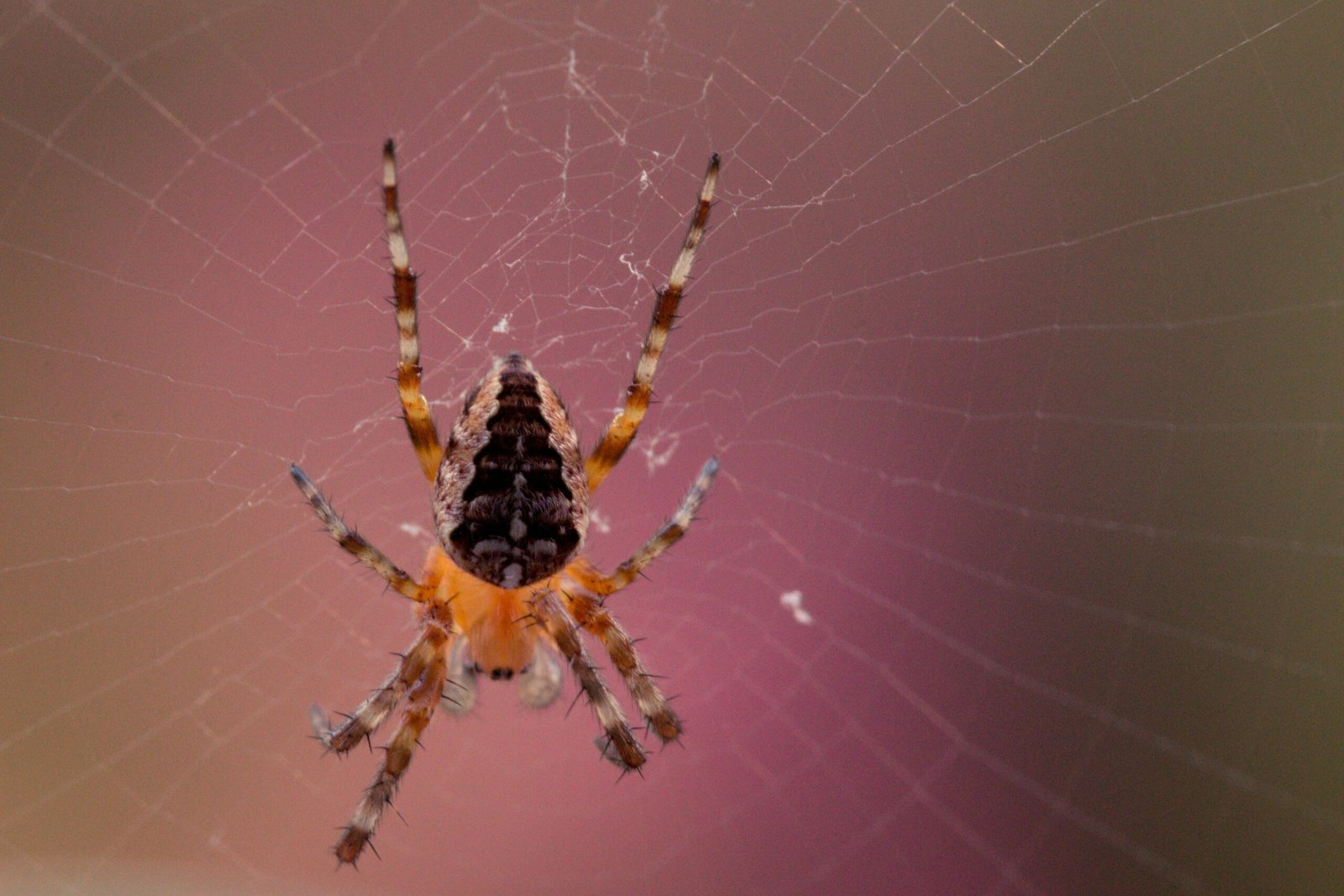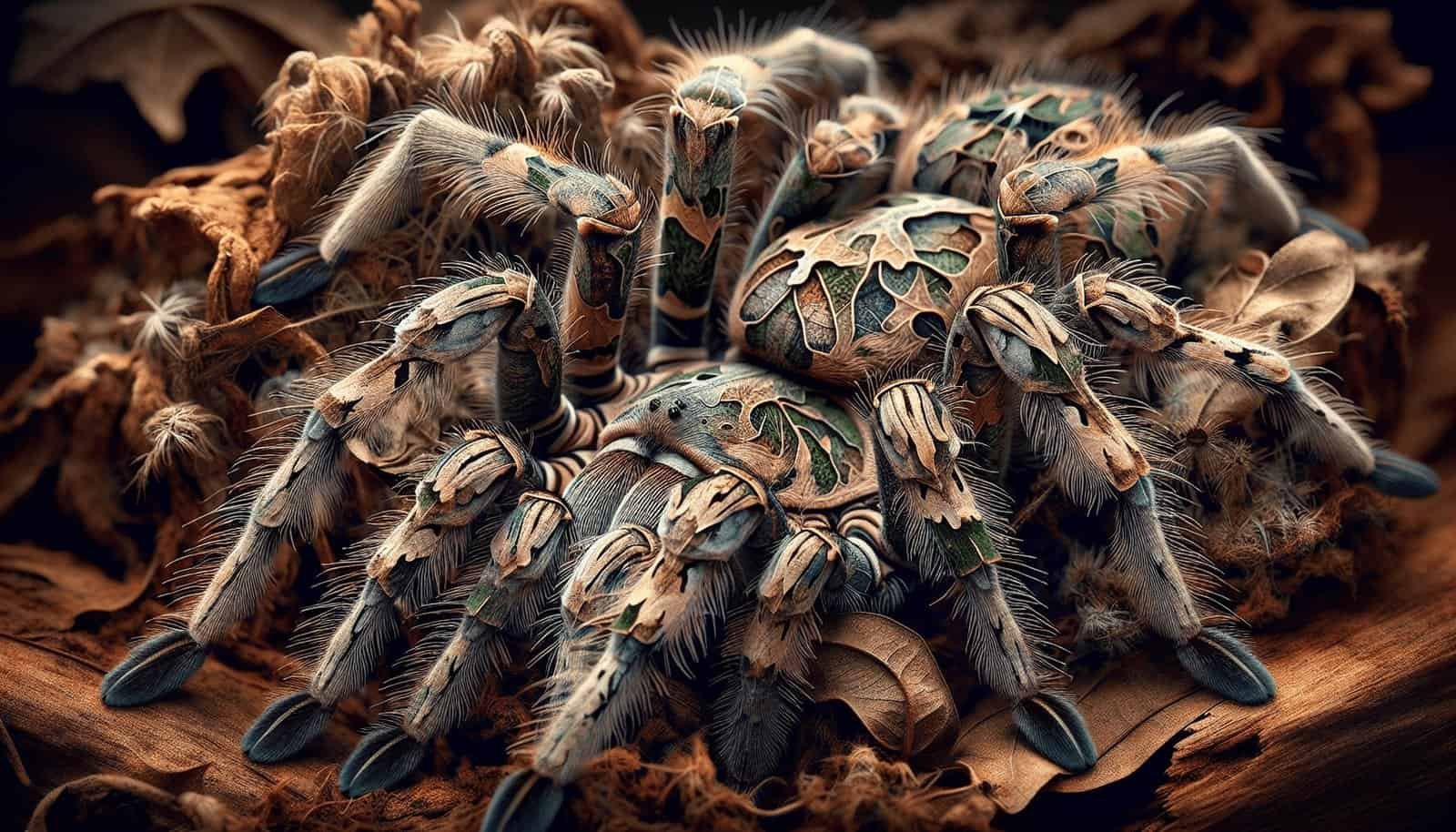Tarantulas are fascinating creatures that often evoke feelings of both fear and curiosity. But have you ever wondered why providing a hide for tarantulas is so important? Well, it turns out that these hideouts play a crucial role in the overall well-being and behavior of these giant spiders. From offering a sense of security to promoting natural behaviors, the significance of providing a hide for tarantulas cannot be overlooked. In this article, we will explore the reasons behind this importance and gain a deeper understanding of these enigmatic arachnids. So, grab a cup of tea and get ready to uncover the hidden world of tarantulas!

Creating a Natural Environment
Recreating the Spider’s Natural Habitat
Creating a natural environment for your tarantula is essential for its overall well-being. By recreating the spider’s natural habitat, you are providing it with a space that closely resembles its native surroundings. This helps to reduce stress and anxiety, as the tarantula feels more comfortable and secure in a familiar environment. To recreate the spider’s natural habitat, you can use materials such as substrate, rocks, branches, and plants that resemble its natural habitat. This will not only make your tarantula feel more at home but also provide opportunities for natural behaviors such as burrowing and web-building.
Reducing Stress and Anxiety
Tarantulas, like any living creature, can experience stress and anxiety. By creating a natural environment, you can help reduce these negative emotions and promote a healthier and happier tarantula. A natural environment with adequate hiding spots and objects to climb on can provide a sense of safety and security for your tarantula. This allows it to retreat to a cozy hiding spot whenever it feels threatened or stressed. Reducing stress and anxiety in your tarantula can have a positive impact on its overall health and well-being.
Promoting Natural Behaviors
In the wild, tarantulas engage in various natural behaviors such as burrowing, web-building, and hunting. By creating a natural environment, you are providing opportunities for your tarantula to engage in these natural behaviors. This not only keeps them physically and mentally stimulated but also promotes healthy growth and development. For example, providing ample substrate for burrowing allows tarantulas to create tunnels and establish their territories. Additionally, providing objects for web-building allows tarantulas to practice their innate hunting instincts. By promoting natural behaviors, you are ensuring that your tarantula leads a fulfilled and enriched life.
Providing Security and Privacy
Protection from Predators
Tarantulas are vulnerable to predators in their natural habitat, and it is essential to provide them with security and protection in captivity. By creating a secure enclosure with appropriate housing materials, you can protect your tarantula from potential predators. Ensure that the enclosure has a tight-fitting lid or secure locks to prevent any unwanted access. Avoid placing the enclosure near other pets or areas where potential predators may be present. Providing security from predators will help your tarantula feel safe and minimize any stress or anxiety it may experience.
Minimizing Disturbances
Tarantulas are generally shy and reclusive creatures that prefer a quiet and undisturbed environment. Minimizing disturbances in their enclosure is crucial for their well-being. Place the enclosure in a quiet area of your home where it is less likely to be subject to loud noises or sudden disruptions. Limit handling to a minimum, as excessive handling can stress out your tarantula and potentially harm it. Minimizing disturbances will allow your tarantula to feel secure and comfortable in its environment.
Privacy for Molting
Molting is a natural process for tarantulas wherein they shed their old exoskeleton to grow larger. During this time, tarantulas are vulnerable and require privacy to molt successfully. Providing hiding spots or shelters in your tarantula’s enclosure is crucial during molting. These hiding spots offer privacy and prevent any disturbances that could potentially harm or interfere with the molting process. Privacy for molting is essential for the health and well-being of your tarantula, as any interruptions during this sensitive time can be detrimental to its health.

Preventing Injuries and Health Conditions
Preventing Falls and Injuries
Tarantulas are skilled climbers, but accidents can still happen. To prevent falls and injuries, it is crucial to create an enclosure that minimizes the risk of falls. Providing appropriate climbing materials such as branches and rocks will allow your tarantula to exercise its natural climbing abilities while minimizing the chance of falls. Ensure that these materials are securely placed and positioned to prevent any accidents. Regularly inspect the enclosure for any potential hazards, such as loose or unstable objects, to maintain a safe environment for your tarantula.
Shielding from Harmful Substances
There are various substances that can be harmful to tarantulas, such as certain cleaning products, pesticides, and household chemicals. It is essential to shield your tarantula from these harmful substances to prevent potential health risks. When cleaning the enclosure, use mild, safe cleaning agents or simply rely on hot water and a scrub brush to avoid any chemical exposure. Keep the tarantula’s enclosure away from areas where chemicals are stored or used to further prevent exposure. By shielding your tarantula from harmful substances, you are ensuring its long-term health and well-being.
Preventing Eye Injuries
Tarantulas have sensitive eyes, and it is important to take measures to prevent eye injuries. Avoid using bedding or substrates that can cause eye irritation or injuries, such as sharp materials or dusty substrates. Ensure that any objects or structures in the enclosure do not protrude or have sharp edges that could potentially injure the tarantula’s eyes. Regularly check for any signs of eye irritation or redness, and consult a veterinarian if you notice any abnormalities. By preventing eye injuries, you are safeguarding your tarantula’s health and ensuring it can see and navigate its environment comfortably.
Creating a Comfortable Temperature and Humidity
Regulating Temperature
Tarantulas are ectothermic creatures, meaning they rely on external sources to regulate their body temperature. It is crucial to provide a comfortable temperature range within their enclosure to ensure their well-being. Research the specific temperature requirements of your tarantula species and adjust the enclosure’s heating or cooling methods accordingly. Avoid placing the enclosure in an area where it is exposed to direct sunlight or drafts, as these extreme temperatures can be harmful to tarantulas. By regulating the temperature, you are creating a comfortable environment for your tarantula to thrive.
Maintaining Adequate Humidity
Humidity plays a vital role in the health and well-being of tarantulas. Different tarantula species have varying humidity requirements, so it is essential to research and replicate the appropriate humidity levels for your specific tarantula species. Use a hygrometer to monitor the humidity levels in the enclosure and make adjustments as necessary. Providing a water dish or misting the enclosure periodically can help maintain the desired humidity levels. By maintaining adequate humidity, you are ensuring that your tarantula’s respiratory system stays healthy and preventing issues like dehydration and molting difficulties.
Preventing Dehydration
Dehydration can be a serious issue for tarantulas, as they rely on moisture for various physiological processes. Providing access to fresh and clean water is essential to prevent dehydration. Place a shallow water dish in the enclosure that is easily accessible for your tarantula, and ensure that the water is changed regularly. Additionally, some tarantula species benefit from misting their enclosure with water to increase humidity levels and provide additional moisture. By preventing dehydration, you are promoting the overall health and well-being of your tarantula.

Providing a Sense of Security
Reducing Stress
A sense of security is vital for the well-being of tarantulas. By reducing stress in their environment, you can promote a healthier and happier tarantula. Minimize disturbances, provide hiding spots, and create a natural setting that closely resembles their native habitat. Additionally, ensure that the enclosure is secure and free from potential threats or predators. By reducing stress, you are creating a sense of security and tranquility for your tarantula.
Aiding in the Molting Process
The molting process is a vulnerable time for tarantulas, and they require a sense of security during this period. Providing hiding spots and removing disturbances in their enclosure can greatly aid in the successful molting process. Once the tarantula enters the pre-molt phase, ensure that the enclosure remains undisturbed to prevent any potential harm or stress. By aiding in the molting process, you are promoting the health and well-being of your tarantula.
Promoting Natural Behavior
Tarantulas, like any living creature, have innate natural behaviors that contribute to their overall well-being. By providing a sense of security, you are encouraging these natural behaviors to occur. Whether it’s web-building, burrowing, or hunting, a secure and stress-free environment allows your tarantula to express these behaviors without fear or stress. By promoting natural behavior, you are creating a comfortable and enriching environment for your tarantula.
Preventing Escapes
Avoiding Loss or Injury
Preventing escapes is crucial to ensure the safety and well-being of both your tarantula and yourself. Tarantulas are skilled escape artists and can squeeze through small openings. Ensure that the enclosure has a tight-fitting lid or secure locks to prevent any accidental escapes. Regularly inspect the enclosure for any potential gaps or holes that could be an escape route. By preventing escapes, you are avoiding the loss or injury of your tarantula and maintaining a safe environment.
Preserving the Tarantula’s Habitat
Tarantulas are native to specific environments, and it is important to preserve their natural habitat. By preventing escapes, you are also preventing the introduction of your tarantula into an unfamiliar environment where it may disrupt the delicate balance of native species. Preserving the tarantula’s habitat is crucial for the overall conservation efforts of these fascinating creatures. By being responsible pet owners and preventing escapes, you play a vital role in the preservation of tarantulas and their natural habitats.
Ensuring Safety
Safety is a top priority when it comes to keeping tarantulas as pets. By preventing escapes, you are ensuring the safety of your tarantula as well as the safety of those around you. Tarantulas, though generally harmless to humans, can cause discomfort or allergic reactions in some individuals. By creating a secure environment, you can prevent any potential incidents or harm to yourself or others. Ensuring safety is essential when keeping tarantulas, as it allows for a harmonious coexistence between you and your pet.

Minimizing Interference and Disturbance
Reducing Stress on the Tarantula
Tarantulas thrive in a quiet and undisturbed environment. By minimizing interference and disturbance, you are reducing the stress levels of your tarantula. Limit handling to a minimum and avoid excessive noise or sudden disruptions near the enclosure. Additionally, ensure that any maintenance or cleaning activities are carried out without causing unnecessary stress to your tarantula. By minimizing interference and disturbance, you are promoting a peaceful and stress-free environment for your tarantula.
Allowing Natural Feeding Behavior
Feeding is an essential part of a tarantula’s natural behavior, and it is important to allow them to exhibit this behavior in captivity. Minimizing interference and disturbance during feeding time is crucial for their well-being. Provide a quiet and secluded area for feeding where your tarantula can consume its prey without distractions. Avoid handling or disturbing your tarantula during and immediately after feeding to prevent any stress or potential harm. Allowing natural feeding behavior contributes to the overall enrichment and happiness of your tarantula.
Observing Natural Behaviors
Tarantulas display a variety of fascinating natural behaviors, and observing these behaviors can be a rewarding experience. By minimizing interference and disturbance, you are given the opportunity to observe your tarantula’s natural behaviors in their purest form. Whether it’s web-building, grooming, or hunting, providing a peaceful and undisturbed environment allows you to witness the intricacies of your tarantula’s behavior. Observing natural behaviors not only provides insights into their lives but also deepens your bond with your tarantula.
Encouraging Healthy Growth and Development
Supporting Molting Process
The molting process is a critical stage in a tarantula’s life, as it allows for growth and development. By creating an environment that supports the molting process, you are ensuring the health and well-being of your tarantula. Providing appropriate hiding spots and maintaining humidity levels are essential during molting. Hiding spots offer privacy and protection, while adequate humidity helps facilitate the shedding of the old exoskeleton. By supporting the molting process, you are promoting healthy growth and development in your tarantula.
Promoting Exercise
Regular exercise is important for the overall health and well-being of tarantulas. By providing a spacious enclosure with objects to climb on and explore, you are encouraging exercise in your tarantula. Branches, rocks, and other climbing materials can stimulate their natural instinct to climb and promote physical activity. Regular exercise helps maintain muscle tone, improve circulation, and prevent obesity in tarantulas. By promoting exercise, you are contributing to the overall fitness and vitality of your tarantula.
Providing Proper Resting Areas
Resting is an essential part of a tarantula’s daily routine. By providing proper resting areas in their enclosure, you are ensuring that your tarantula has a comfortable and safe place to relax. Place hideouts or shelters in the enclosure that allow your tarantula to retreat and rest whenever it desires. These resting areas provide a sense of security for your tarantula and contribute to its overall well-being. By providing proper resting areas, you are creating a cozy and comforting environment for your tarantula.

Enhancing Observation and Study
Better Visibility
Having a clearer view of your tarantula’s enclosure is beneficial for both observation and study purposes. By ensuring better visibility, you are able to closely monitor your tarantula’s health and behavior. It allows you to quickly notice any changes or abnormalities that may indicate potential health issues. Additionally, better visibility enhances the overall experience of studying your tarantula’s fascinating behaviors, from web-building to hunting. By enhancing observation and study, you are deepening your understanding and knowledge of these remarkable creatures.
Monitoring Health and Behavior
Regular monitoring of your tarantula’s health and behavior is crucial for early detection of any potential issues. Creating an environment that allows for easy monitoring enhances your ability to notice changes in appetite, activity level, or appearance. By closely observing your tarantula, you can detect any signs of illness or stress and take appropriate action. Monitoring health and behavior enables you to provide timely care and ensure the well-being of your tarantula.
Research and Education
Observation and study of tarantulas contribute to research and education efforts surrounding these fascinating creatures. By better understanding their behaviors, ecologies, and adaptations, researchers and educators can shed light on the importance of tarantulas in the ecosystem. By creating an environment that enhances observation and study, you are indirectly supporting research and education initiatives focused on tarantulas. Your observations and experiences can contribute to a broader understanding and appreciation of these remarkable arachnids.
Promoting Tarantula Enrichment
Stimulating Natural Hunting Instincts
Tarantulas are natural hunters, and providing opportunities for them to exhibit their hunting instincts is essential for their overall well-being. By creating an environment that stimulates natural hunting behaviors, you are promoting tarantula enrichment. Feeding live prey or using puzzle feeders can engage their hunting instincts and provide mental stimulation. Watching your tarantula capture and consume its prey not only satisfies its natural instincts but also offers a rewarding and enriching experience for both you and your tarantula.
Creating Opportunities for Web Building
Web building is a fundamental behavior for many tarantula species. By providing opportunities for web building, you are allowing your tarantula to engage in its natural behavior. This includes providing appropriate materials such as silk strands, twigs, and branches for your tarantula to construct its intricate web structures. Web building not only provides mental stimulation but also serves as a means of communication, navigation, and hunting for tarantulas. By creating opportunities for web building, you are enhancing the overall enrichment and well-being of your tarantula.
Providing Mental Stimulation
Tarantulas, like any living creature, benefit from mental stimulation. By providing a stimulating environment, you are preventing boredom and promoting a healthier and more active tarantula. This can be achieved by introducing novel objects, rearranging the enclosure’s layout occasionally, or offering different types of substrates. Offering a variety of hiding spots, objects to climb on, and areas for exploration keeps your tarantula mentally engaged and prevents monotony. Providing mental stimulation contributes to the overall enrichment and contentment of your tarantula.
In conclusion, creating a natural, secure, and comfortable environment for your tarantula is essential for its well-being. By recreating the spider’s natural habitat, reducing stress and anxiety, and promoting natural behaviors, you are ensuring a happier and healthier tarantula. Providing security and privacy, preventing injuries and health conditions, and maintaining optimal temperature and humidity are crucial aspects of tarantula care. Additionally, promoting a sense of security, preventing escapes, and minimizing interference and disturbance contribute to the overall welfare of your tarantula. By focusing on encouraging healthy growth and development, enhancing observation and study, and promoting tarantula enrichment, you can provide a fulfilling and enriching life for your tarantula. Ensure to prioritize the specific needs of your tarantula species and seek professional advice whenever necessary to ensure the best care for your arachnid companion.